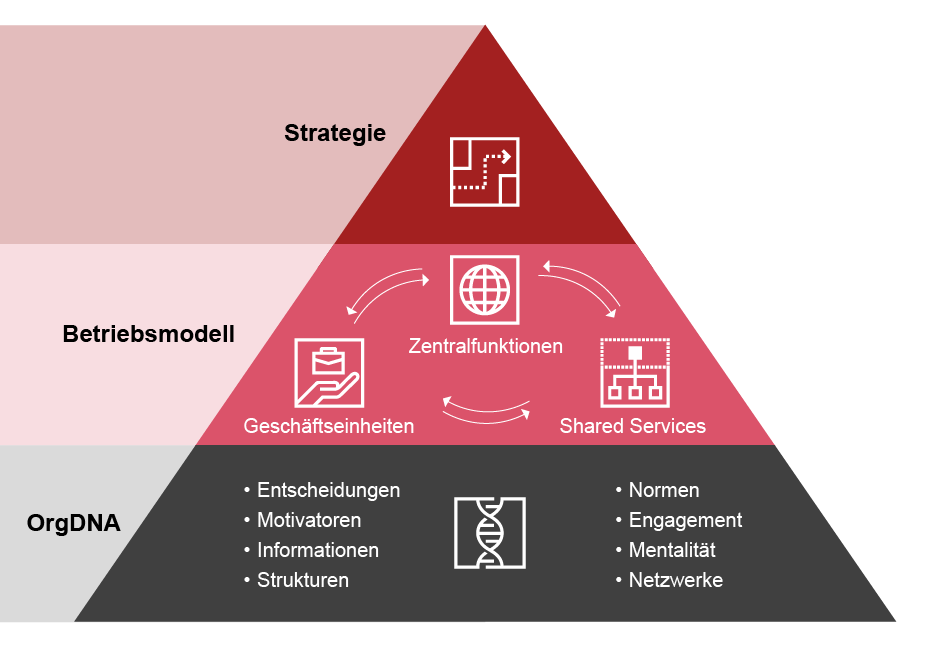{{item.title}}
{{item.text}}

{{item.text}}
Time and again, companies have to adapt to new market conditions. External events such as the Covid-19 pandemic can trigger internal change processes, new competitors can attack a company’s business model, or innovative technologies can require changes to established processes. There are also additional challenges to consider, such as mandatory compliance with ESG criteria or the increasing war for talents. If companies fail to manage the responses to such developments at the top management level and reflect them throughout the company with a targeted organization strategy, the entire business can be at risk.
To survive in this volatile competitive environment, companies need a holistic, strategy-based approach to optimizing their operating model, structure, and corporate culture. Apart from the targeted selection and training of competent employees, this includes enterprise resource planning geared to sustainable growth. When implementing these measures, it is essential to align structures, processes, and decision-makers.
Our expert teams have in-depth methodological proficiency, a wealth of experience, and the required change management skills to support our clients in this process. First, we identify a company’s strategic goals and assess the extent to which its individual corporate culture, which we call “OrgDNA”, supports the fulfillment of those goals. For the successful realignment of the organization and its functional strategy, we then define and implement specific changes: from cost transformation to personnel recruitment and training to the further development of the individual corporate culture.
Transformation orchestration and management
We support critical transformations from strategy to execution: We develop strategies for ERP / cloud transformations, new business models and cost programs. We use corporate culture as an effective lever to successfully embed transformations throughout the organization and actively involve employees. In addition, we help C-level teams to successfully shape organizational change.
Operating model analysis and design
Our team is leading in organizational diagnostics for entire companies, business units or departments. We support you in the areas of governance, process and performance management and the digital, product-centric, agile or sustainable transformation of business models.
Value-based turnaround
Whether growth or turnaround - we support you in volatile economic conditions and are experts in cost efficiency, strategic and operational repositioning, cost transformation programs as well as complex, functional processes such as market entry, marketing, innovation, and R&D strategies, as well as Fit for Growth.
People excellence and corporate culture
Whether it is HR and talent strategy or workforce transformation, we work closely with personnel managers to align the CHRO agenda with current HR challenges and support you in the areas of culture change, change management, organizational development or future of work.
{{item.text}}

{{item.text}}





